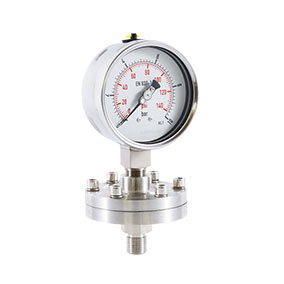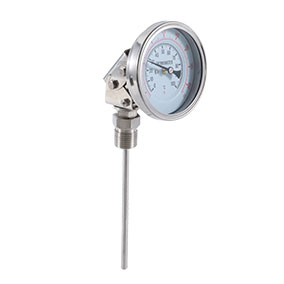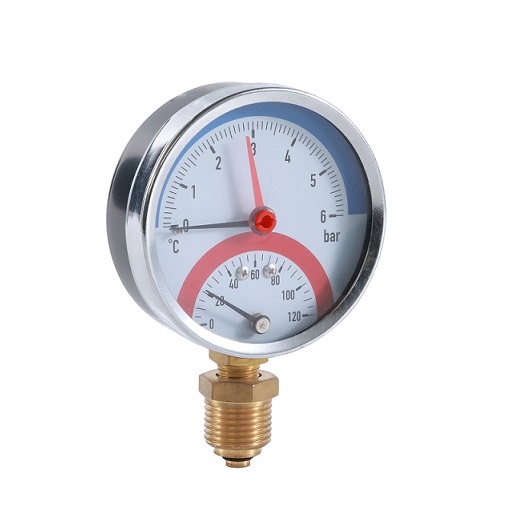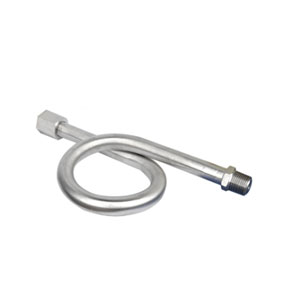Navigating the Heat: Factors to Consider When Choosing a Bimetallic Thermometer
When it comes to monitoring temperature in various applications, bimetallic thermometers are a popular and reliable choice. If your process requires accurate and reliable temperature readings to ensure the protection of your equipment and its operators, you need to use the right bimetallic thermometer. If you don’t, you could risk damage to your instrumentation that can bring your business to a halt.
High-Quality Bimetallic Thermometers
To ensure that a bimetallic thermometer is the best fit for your process, you should first make sure it is of good quality. A quality bimetallic thermometer must be sealed to prevent fogging inside the housing.
The bimetallic should also be easy to read, have a temperature range that meets your application requirements, and have a span accuracy of ±1%.
Let’s discuss other factors to consider when choosing a bimetallic thermometer.
Temperature Range: One of the primary considerations when selecting a bimetallic thermometer is the temperature range it can accurately measure. Different applications require thermometers with specific temperature ranges. For instance, industrial processes may demand thermometers capable of measuring high temperatures, while refrigeration applications require thermometers suited for lower temperatures. Choose a thermometer with a range that aligns with your intended use.
Accuracy and Precision: The accuracy of a thermometer refers to how closely it measures the true temperature, while precision relates to the consistency of measurements. Look for bimetallic thermometers with high accuracy and precision to ensure reliable temperature readings. Calibration and certification processes can further enhance accuracy, making them suitable for critical applications where precise temperature control is essential.
Durability and Construction: Bimetallic thermometers are known for their robust construction, but it's essential to consider the environment in which the thermometer will be used. For harsh industrial settings or outdoor applications, opt for thermometers constructed from durable materials such as stainless steel or brass, capable of withstanding corrosion, moisture, and mechanical stress. Additionally, ensure the thermometer's design provides protection against environmental factors that could affect its performance.
Response Time: The response time of a thermometer refers to how quickly it can detect and display temperature changes. In applications where rapid temperature fluctuations occur, such as HVAC systems or food processing, a bimetallic thermometer with a fast response time is crucial for timely monitoring and control. Consider the design and specifications of the thermometer to evaluate its response time and suitability for your specific application.
Mounting Options: Bimetallic thermometers are available in various mounting configurations to accommodate different installation requirements. Whether you need a surface-mounted, panel-mounted, or immersion-type thermometer, ensure that the chosen model offers the appropriate mounting option for seamless integration into your equipment or system. Proper mounting ensures accurate temperature measurement and convenient access for monitoring.
Size and Display: Consider the size of the thermometer and the readability of its display, especially in applications where space is limited or visibility is critical. Compact thermometers with clear, easy-to-read dials or digital displays facilitate efficient temperature monitoring and troubleshooting. Choose a size and display format that aligns with your preferences and operational needs.
Budget and Value: Finally, consider your budget constraints and the overall value offered by the bimetallic thermometer. While cost is an important factor, prioritize quality, reliability, and features that meet your requirements. Investing in a high-quality thermometer may incur initial expenses but can lead to long-term savings by reducing downtime, maintenance costs, and potential errors associated with inaccurate temperature measurement.
Now that you understand the factors to consider when choosing a bimetallic thermometer, you should be able to find the best bimetallic thermometer for your application. Exactinstru's bimetallic thermometers and exhaust gas thermometers offer easy-to-read temperature measurements on a dial indicator.
You can also contact the experts at Exactinstru if you have questions about temperature instrumentation.




